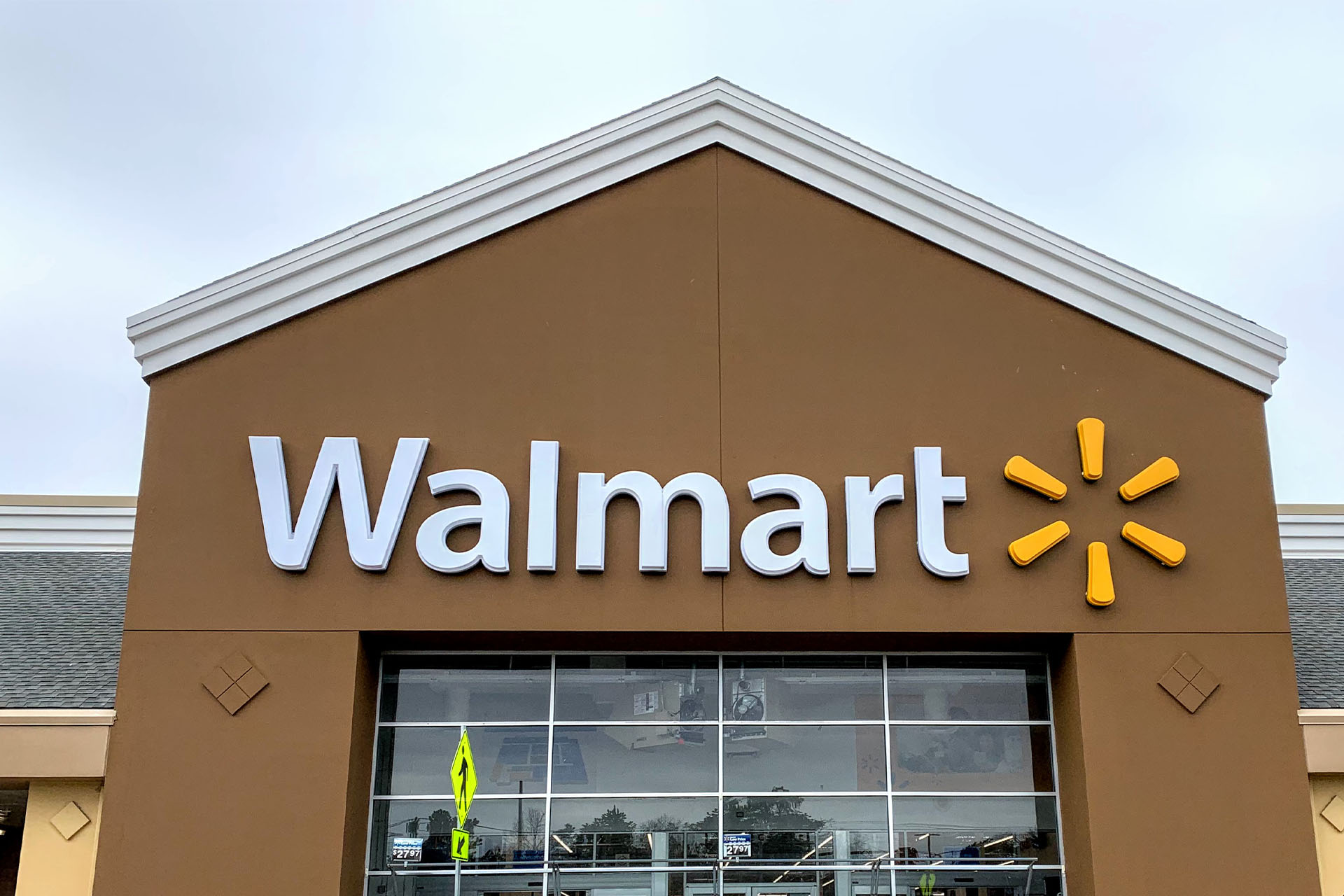“The business model is changing: I think that’s the headline,” Doug McMillion, Walmart CEO, said during the company’s fourth-quarter conference call.
Walmart is shifting its resources to create and expand new revenue streams while making itself more competitive in a marketplace that had already been changing under the influence of e-commerce but got a booster from the COVID-19 pandemic. McMillon’s perspective on the company suggests that now is a time to consider what Walmart is becoming and where it is headed.
As it looks forward to the year ahead, and the possibility that the COVID-19 pandemic is finally winding down, Walmart is in a stronger position due to gains made over the past couple of years and initiatives it has launched or accelerated, some because of the coronavirus crisis, some incidental to it.
Walmart has positioned itself as a more vital resource for middle- and lower-income shoppers not only by remaining accessible during the pandemic but by launching or expanding initiatives developed to help customers cope with everyday challenges. The acceleration of curbside pickup originally developed to cut the amount of time customers had to spend on core shopping trips and give back more to family time became an even greater benefit by allowing consumers to get what they needed with minimal personal contact with other customers or the store environment.
At the same time as it was expanding conspicuous services such as pickup and delivery, Walmart had plenty happening on the corporate level, some of it high profile and some of it emerging from behind the scenes.
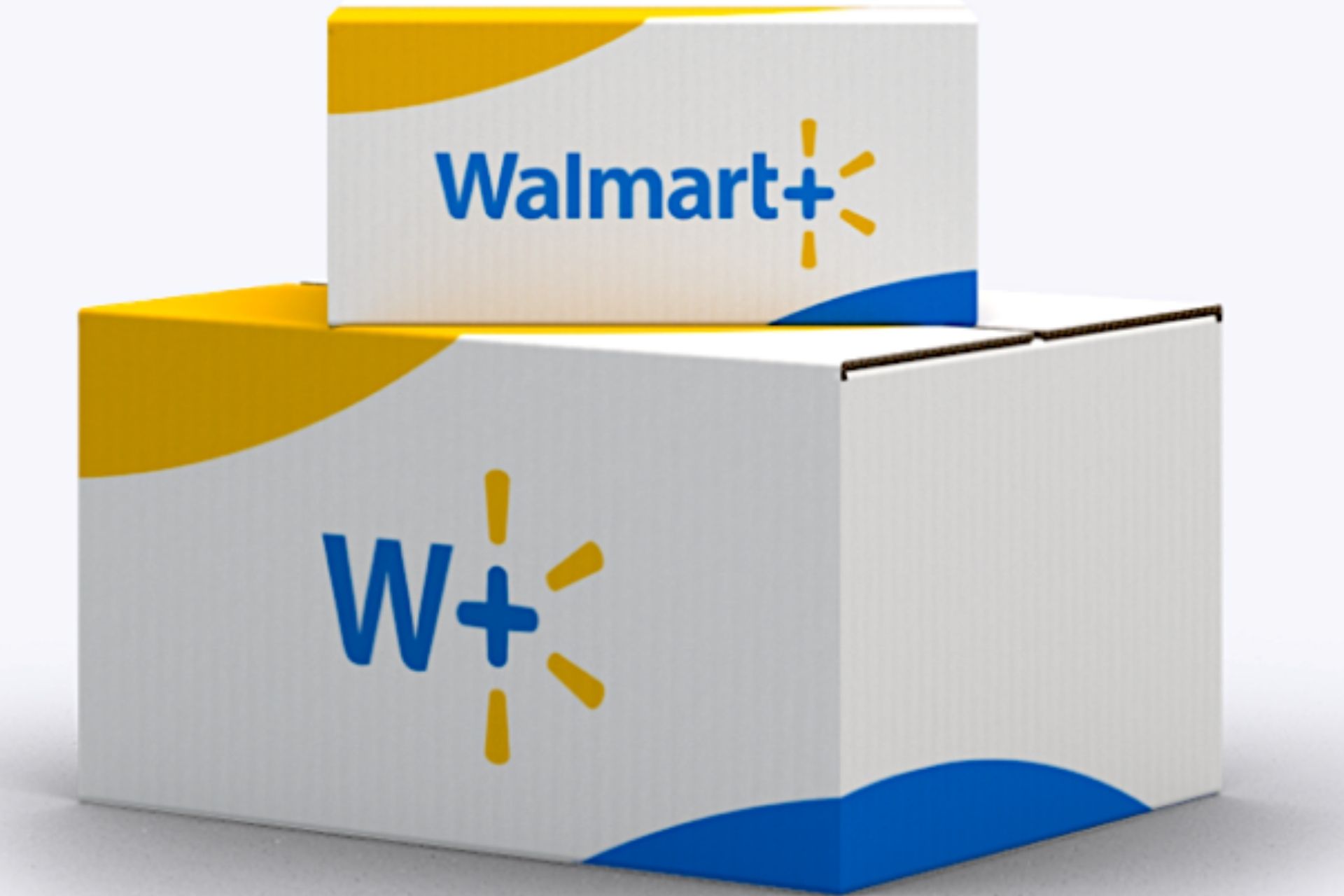
Walmart stepped away from several major international markets, including the United Kingdom, Japan and Argentina. Walmart still is a huge international player in the retail sector, as the company’s presence in China, India, Mexico, Canada and some 20 other countries across the globe attests. It adapts approaches to address various national circumstances, such as e-commerce-based business in India with FlipCart; and 2,700 stores in Mexico in addition to e-commerce.
Walmart divestitures had an impact on comparisons as its latest completed fiscal year, 2022, opened in early calendar 2021, so they were telling in that sense. However, Walmart was looking ahead rather than behand, making big investments in the United States to deal with the ongoing pandemic, such as tests of various delivery programs including InHome, a service that sends a Walmart employee to stock a consumer’s refrigerator and cabinet. Yet, some of the shopping services it offers today, especially local delivery of everyday necessities, are limited geographically and in terms of products offered. It’s fair to say that Walmart efforts including InHome and other local delivery still haven’t reached anything close to full potential.
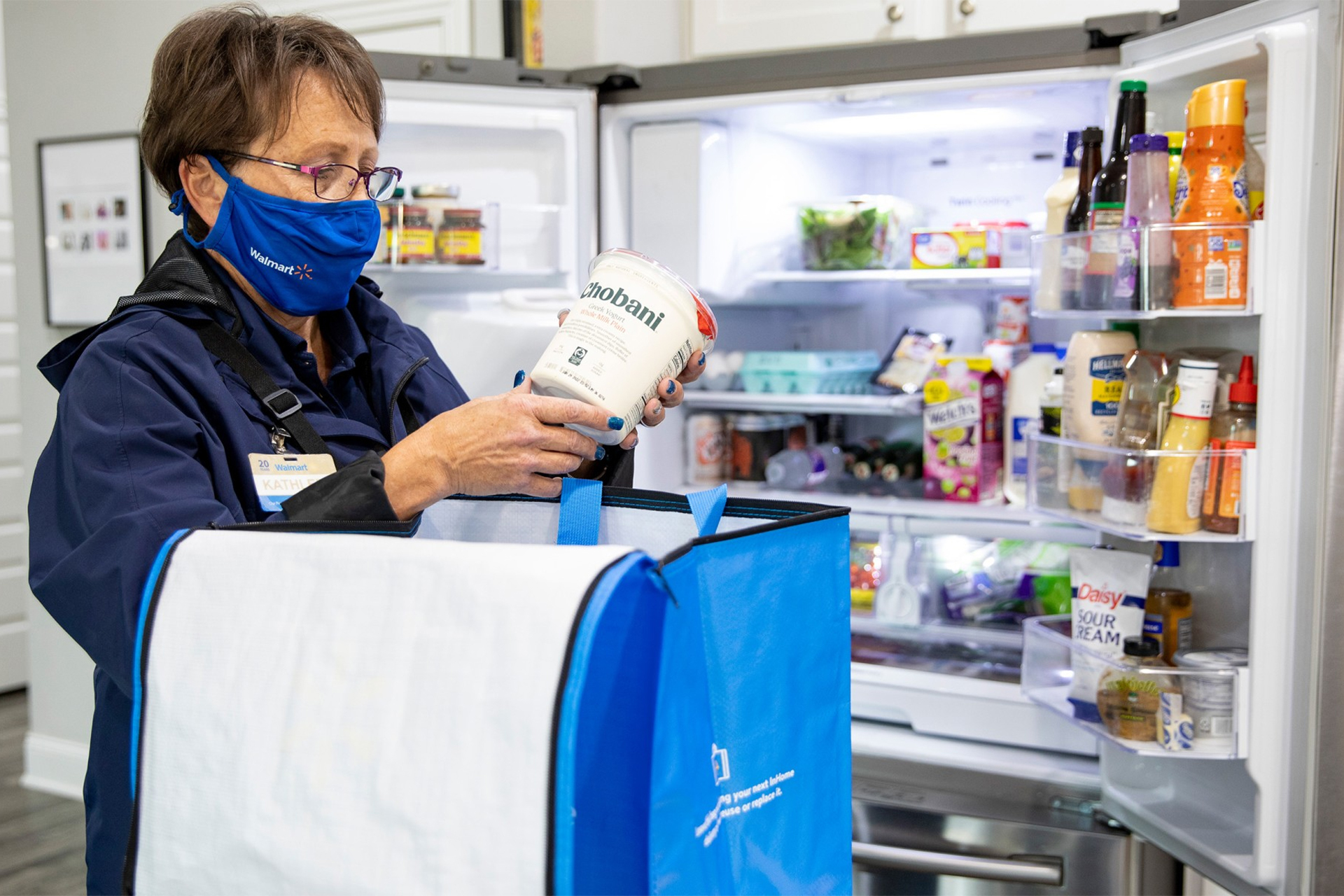
Walmart.com, of course, offers a broad array of food for FedEx and UPS delivery. However, its potential for delivery of essentials to the home is hard to gauge, in part because it has multiple initiatives ongoing that will likely shape the service in unique ways.
At times, Walmart almost seems to be hybridizing itself. In projects such as GoLocal, where Walmart is doing last-mile delivery for other retailers, including big players such as Home Depot and local small businesses, the company is getting involved in the types of services that have driven Amazon profits. GoLocal is a way for Walmart to leverage its infrastructure and evolving fulfillment network, but it doesn’t require the use of the retailer’s employees. It uses a Walmart-affiliated crowdsource service, Spark Delivery, for fulfillment.
At third quarter’s end, McMillon threw a spotlight on Walmart’s build-up of service offerings, including GoLocal. It also aimed at its vendors and participants in its online marketplace — including Walmart Connect advertising, Walmart Luminate data services and Walmart Fulfillment Services — all identified as alternative revenue streams.

If the business services seem reminiscent of Amazon, the extended customer and employee services resemble what Tesco has done over the years in the United Kingdom. Tesco offers a full range of financial services including banking, with an adjunct automobile insurance operation, a mobile phone offering, even pet insurance. Walmart’s financial services may not yet be as broad or deeply penetrated as is Tesco’s in Britain. But Walmart does offer mobile phones and pet insurance through Fetch, which consumers can access via Walmart.com. Walmart Moneycenters today not only include bill pay and card services, but it offers check cashing and money transfers in an alternative banking structure for consumers who don’t have traditional accounts.
In most cases, Walmart takes on partners to help it roll out financial and related services and, in early 2011, it launched a fintech initiative with Ribbit. At the same time, Walmart has been hiring bankers to oversee its expansion into financial services. Walmart can work with or even absorb its partners in the longer term. Walmart earlier this year acquired Even Responsible Finance, which the retailer already offered employees early wage access; and ONE Finance, a neobank that serves as a financial services mobile app. Eventually, Walmart could offer a full range of banking services tied to its own app, which would make that function more valuable to consumers.
Like other retailers, Walmart has been pushing consumer downloads of its app, as it has memberships to its $98 per year Walmart+ membership program, which got off to a sluggish start after its 2020 launch. Observers have commented on the potential benefits associated with tying financial services with Walmart+ while providing perks that boost the value of the membership program. Certainly, Walmart wants to enhance the program’s value, recently launching exclusive shopping events, discounts and product bundles for Walmart+ members. Walmart already offers a discount prescription benefit with Walmart+ membership. Observers have pointed out that additional healthcare perks could be an attractive selling point for the memberships.

In a marketplace where looser regulations have allowed fintech to make a significant impact on the marketplace in the form of “Buy Now Pay Later” (BNPL) services. Established alternative payment operations such as Paypal also are expanding financial services. In both cases, younger consumers with smaller bank accounts and poor to no credit are a target audience, although they all claim to have broad acceptance. Recently, BNPL services such as Klarna and Affirm made high-profile deals with retailers that helped make them a common feature of the most recent holiday season.
In 2019, Walmart began working with BNPL major Affirm to provide an alternative to its layaway program, at least initially. Walmart characterized the move as a means of providing customer options across payment methods. The retailer told HomePage News
that it had learned about customer needs and shopping habits and how those have changed such that it chose to expand the range of payment methods to satisfy customers in new ways. Walmart works with Affirm, but it also offers the Capital One Walmart Rewards Card to satisfy as many consumer credit preferences as it can. Affirm purchasing is limited to specific categories, such as home, electronics, video games, apparel and jewelry, and it can’t be used to buy alcohol, groceries, fuel, personal care, money services, register merchandise, pharmacy, health and wellness and weapons. Consumers can use Affirm on Walmart.com and in stores.
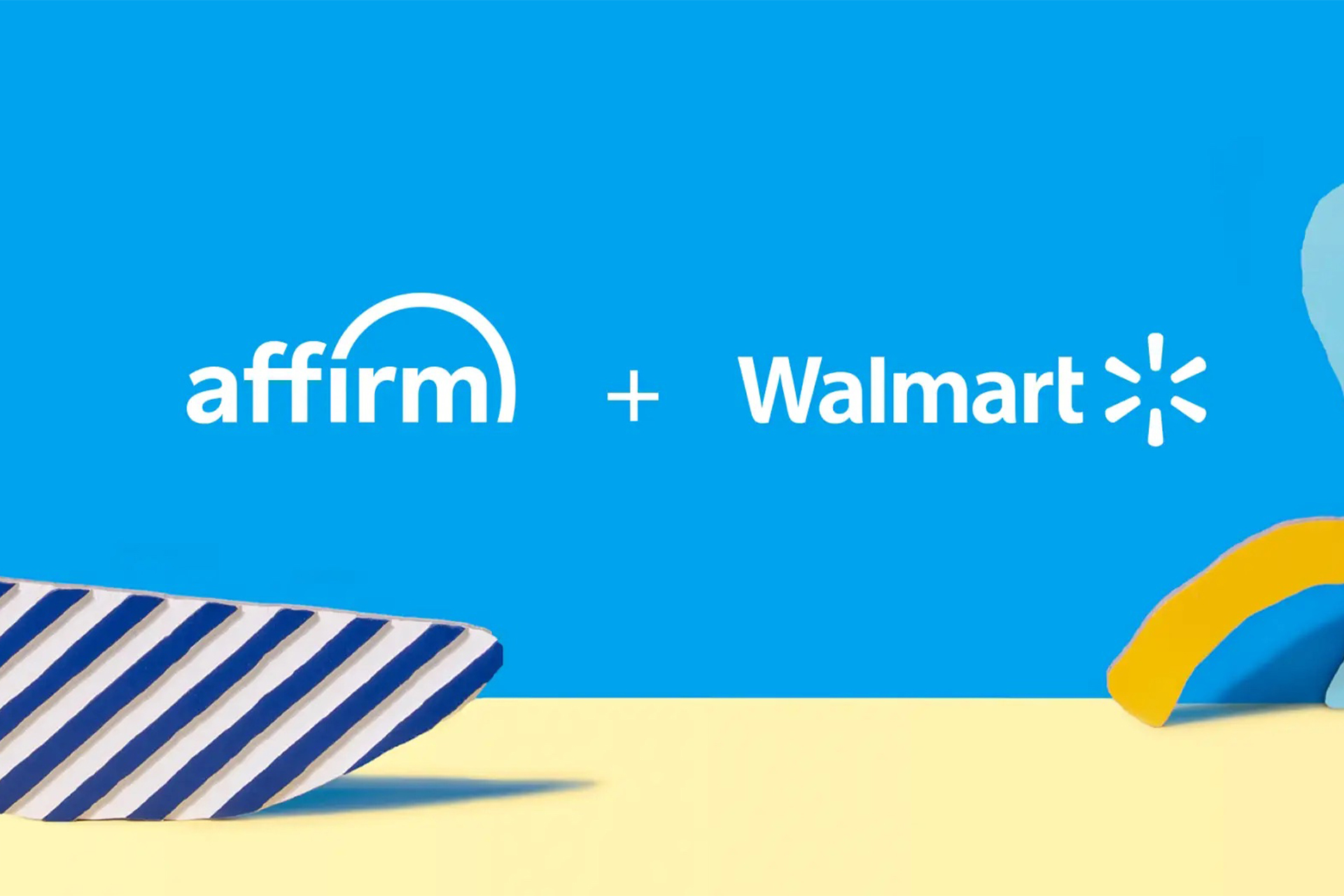
Walmart has set itself up to be a lifestyle resource for consumers on the lower half of the economic scale and a business services center for those most in its orbit including vendors and marketplace participants, but also, with GoLocal and Spark, a wider range of enterprises. Walmart often will leverage its vast resources to experiment or temporarily acquire businesses to learn their operations and technology, as it did with the McLane distribution business when it was expanding food operations. Walmart also will consume and dump businesses, with Jet.com being a recent case.
The move to provide consumers with additional services may be helping Walmart. In the InMarket Insights Q4 2021 Consumer Loyalty Report, among the top five big-box stores, Walmart generated the greatest consumer loyalty. The market research firm used location tracking data and found that Walmart was on top, followed by Meijer, Fred Meyer, Target and Walmart’s Sam’s Club. Walmart, as InMarket Insights indexed it, also had the highest score at 5.68 among the retail categories covered, followed by H-E-B at 4.63, Market Basket at 3.9, Kroger at 3.8 and King Soopers at 3.77
An improving price gap position may have helped Walmart’s loyalty scores. In an e-commerce example, a Profitero study demonstrated Walmart’s online prices inched closer to leader Amazon in 10 of 15 categories covered. Walmart’s biggest gains on Amazon 2021 were in fashion, going from 10% more expensive on identical items in 2020 to 5% more costly. Pets went from 8% to 3% higher, on average. In six categories, Walmart’s online prices had reached near parity with Amazon with just a 1% to 2%: appliances, beauty, food/beverage, health/personal care, home furniture, and sports/outdoors. In food/beverage, Walmart closed the price gap from 2% in 2020 to just 1% in 2021, while in sports/outdoors, it closed the price gap from 7% to 2% higher.
Walmart’s biggest gains on Amazon 2021 were in fashion, going from 10% more expensive on identical items in 2020 to 5% more costly. Pets went from 8% to 3% higher, on average. In six categories, Walmart’s online prices had reached near parity with Amazon with just a 1% to 2%: appliances, beauty, food/beverage, health/personal care, home furniture, and sports/outdoors. In food/beverage, Walmart closed the price gap from 2% in 2020 to just 1% in 2021, while in sports/outdoors, it closed the price gap from 7% to 2% higher.
Not everything is smooth sailing for Walmart. In reviewing Walmart’s fourth-quarter results, Pulse Ratings stated although it is encouraged by Walmart guidance for a 4% sales rise and 3% comp gain, it wasn’t satisfied with Walmart’s actions on price gaps across the entirety of the operations. Pulse Ratings reported it would monitor Walmart’s ability to compete with wider price gaps than in the pre-pandemic period, providing value to its price-sensitive shoppers and maintaining profitability margins in the fiscal year ahead.
Mark Neckes, former chairman of the marketing department of Johnson and Wales University and a former department store buyer, said the number of initiatives Walmart is taking on at the same time could turn out to sew confusion and cause complications. For example, he said, when Walmart, offered free shipping to its $12.95 monthly/$98 yearly memberships, it dropped free shipping for purchases over $35, a deal many preferred.
“Now they have to spend 12.95 a month to get what they used to get for free,” Neckes said.
As fiscal 2022 began, Walmart executives responding to its strong financial performance provided insight on the year ahead and where new initiatives, particularly the expanded range of consumer services and initiatives including Walmart+ membership might be going.

Doug McMillon, Walmart CEO
As fiscal 2022 began, McMillon looked back on a first-quarter during which, he said, Walmart enjoyed a strong performance in all business segments.
In a conference call discussing first-quarter results, McMillon characterized the year ahead as bringing specific challenges and uncertainties, but he added it inspired optimism as the positive effects of federal economic stimulus payments in the United States had been followed by signs that consumers wanted to get out and shop.
McMillon pointed to an acceleration of store traffic, market share gains in grocery, better in-stock levels and a 43% global advance in e-commerce revenues, which pushed worldwide e-commerce penetration to more than 12% of total company sales, up 340 basis points from the fiscal year prior. He anticipated the challenges that supply chain snarling and inflation would bring and addressed the point of price gaps with the competition.
He highlighted a comparable sales gain of 6%, including 37% growth in e-commerce as positives, with apparel, home, hardlines and seasonal making notable gains.
McMillon pointed to the effects of new initiatives, emphasizing that gross movement volume through marketplace fulfillment services and advertising income with Walmart Connect played a positive part in Walmart’s results. He also highlighted construction of a new flywheel developed to strategically drive Walmart sales, one incorporating membership and additional store and services in a continual loop designed to keep customers seeking Walmart more often and for more services.
“As we previously shared, the top of the flywheel starts with being the best first place people shop. Store remodels, investments in pickup and delivery capacity and sales of Walmart+ fall into this category of activities,” McMillon said. “We need more capacity to get ahead of demand, and we remain convinced these investments are smart ones. “This is one of the keys to selling more Walmart+ memberships, which is an important piece of our strategy over time,” he added.
“In addition to work at the top of the flywheel, we’ll continuously add brands, assortment and capabilities to our e-commerce general merchandise business with first-party inventory and marketplace expansion,” McMillon continued. “We’ll invest in our general merchandise business and grow in higher-margin categories. The announced acquisition of Zeekit is a great example. This start-up combines fashion and technology through a dynamic virtual fitting room and underscores the desire to grow our apparel business aggressively. We continue our work to build a larger health and wellness business and help customers and associates have a better experience when it comes to their healthcare. Our acquisition of MeMD is a big step in that direction. Adding a telehealth capability was important.”
We’ll invest in our general merchandise business and grow in higher-margin categories. The announced acquisition of Zeekit is a great example. This start-up combines fashion and technology through a dynamic virtual fitting room and underscores the desire to grow our apparel business aggressively. We continue our work to build a larger health and wellness business and help customers and associates have a better experience when it comes to their healthcare. Our acquisition of MeMD is a big step in that direction. Adding a telehealth capability was important.
– Doug McMillon, Walmart CEO
Ethan Chernofsky, vice president, marketing at market researcher and traffic tracker Placer.ai, observed Walmart finished the fiscal year strong relative to the rest of retail.
“Like others, they were able to effectively communicate the unique challenges being faced in the holiday season driving significant visits bumps in October,” Chernofsky said. “And while November did see declines, December saw a return to year over two-year visit growth. This marks a huge accomplishment considering the major effect that Omicron was already having on U.S. retail by December. In addition, the strength came as increased competition in the value retail lane, Dollar General, Big Lots, Five Below and others, all saw growing strength, often in the form of expanding store counts and new concepts. The ability of Walmart to maintain its dominant position in a difficult environment with increasing competition only speaks to the retailer’s unique place in the market.”
Given the strength of sales at the height of the COVID-19 pandemic, Walmart demonstrated considerable momentum as consumer behavior shifted again to the effect of the Omicron variant. However, at least some observers noted that even if some sales shifted to Walmart stores, the 1% e-commerce gain was a bit surprising.
In a fourth-quarter conference call, McMillon said the company had navigated the tough marketplace well, despite the general supply chain and labor turbulence, and demonstrated that it “can keep our price gaps in the range where we want them, grow market share and deliver against our top and bottom-line growth algorithm.”
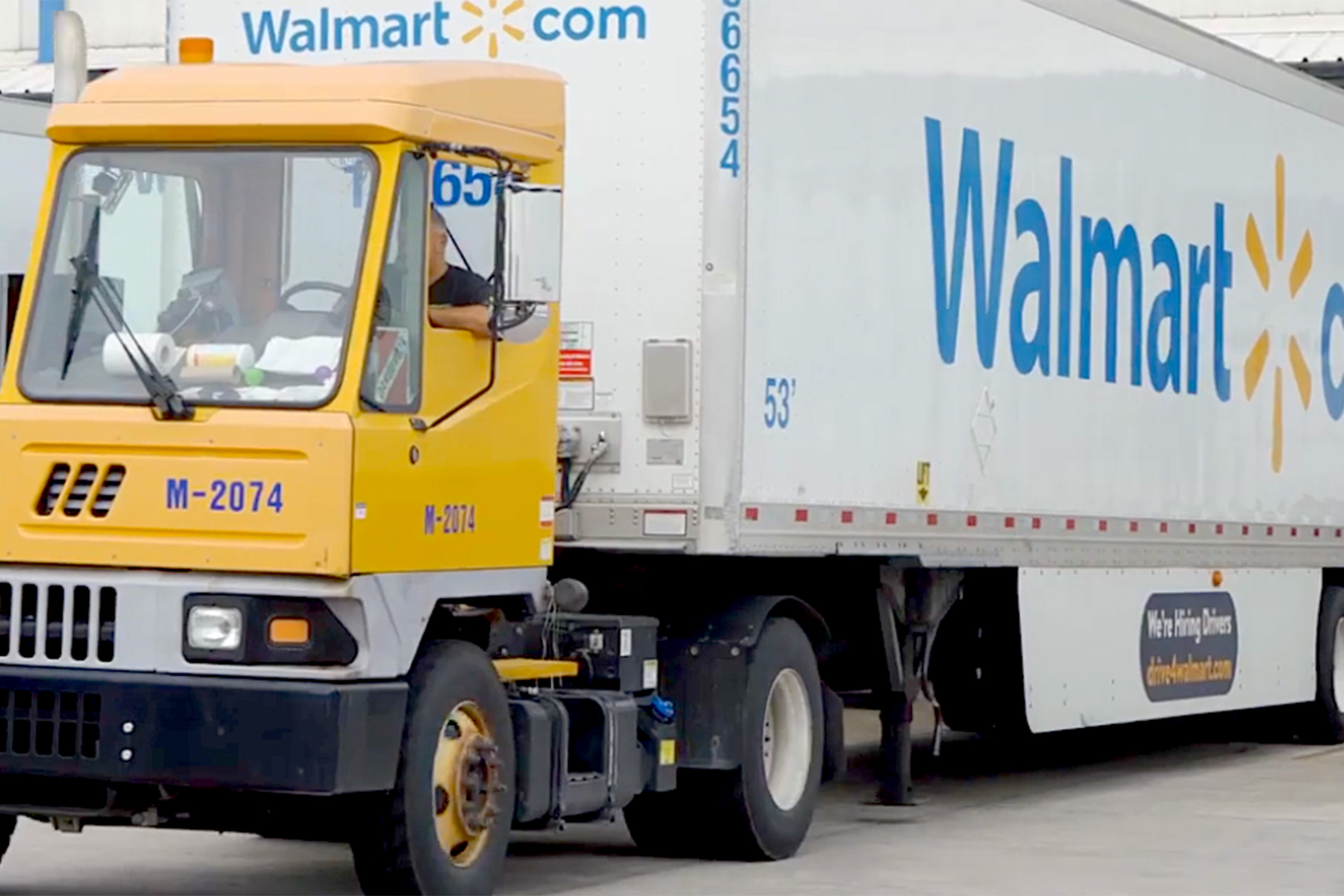
He pointed out that general merchandise comps gained in the low single digits in the U.S. even as seasonal, food, consumables and apparel made strong showings across markets.
In playing up the service aspect, McMillon said Walmart increased pickup and delivery capacity by 20% last year and expects to increase it by 35% this year. Walmart will make InHome available to 30 million U.S. homes in the coming months, up from six million. As it expanded delivery, Walmart is outfitting a fleet of all-electric delivery vans with the goal of a zero-emissions logistics fleet by 2040.
McMillon pointed to the potential of business-to-business operation, where Walmart’s advertising operation continues growing and where, he said, marketplace and fulfillment services have years of gains ahead of them. The GoLocal last-mile delivery solution that uses the crowd-sourced Spark platform creates an opportunity to build business with large retailers but McMillon said he was most excited about the chance to work with smaller local operations.
In the midst of it all, McMillon said, Walmart acknowledged that Walmart stores had become hybrids as they function both as retail locations and fulfillment centers. Walmart increased the number of orders coming from its stores by 170% in fiscal 2022 from fiscal 2021 on top of a more than 500% increase from fiscal 2019.
Chernofsky wasn’t one to worry about the single-digit e-commerce number at fiscal year’s end.
Walmart had a very strong year, especially relative to the wider retail environment,” he said. “The ability of the retailer to return to visit growth all while enhancing its digital offering and capabilities was exceptional, especially considering the unique challenges presented and the greater competition the retailer faced.
– Ethan Chernofsky, VP, Marketing, Placer.ai
With all the positives related, Walmart still seems to be feeling its way around Walmart+. Of course, the company is no stranger to membership models given its success, especially lately, with Sam’s Club. But Walmart+ remains a work in progress.
“We’re not going to share Walmart Plus yet,” he said. “I don’t really want to have the company defined by one metric. And with subscriptions being such a topic these days, everybody gets really focused on that. Walmart is always going to be a business where you need to look across and see how the omnichannel business is playing out. You know, there are going to be times when e-commerce grows faster than stores. And as we’ve seen recently, stores are attractive during certain periods of time. Walmart Plus is important. It helps us grow our e-commerce business. It helps us deepen the relationship with customers and have more data.”
Placer’s Chernofsky said that it’s hard to view Walmart’s overall year as anything but a significant success.
“Visits were up four of the last six months of the year compared to the same months in 2019, and the only declines came in a COVID impacted September and a fundamentally different November,” he said. “The visit bounce-back speaks to the power of Walmart’s omnichannel strategy enabling customers to choose the ideal method for each shop. It’s also important to recognize that all of this happened for a massive retailer that showed the ability to effectively adapt even in spite of its enormous size and reach.

